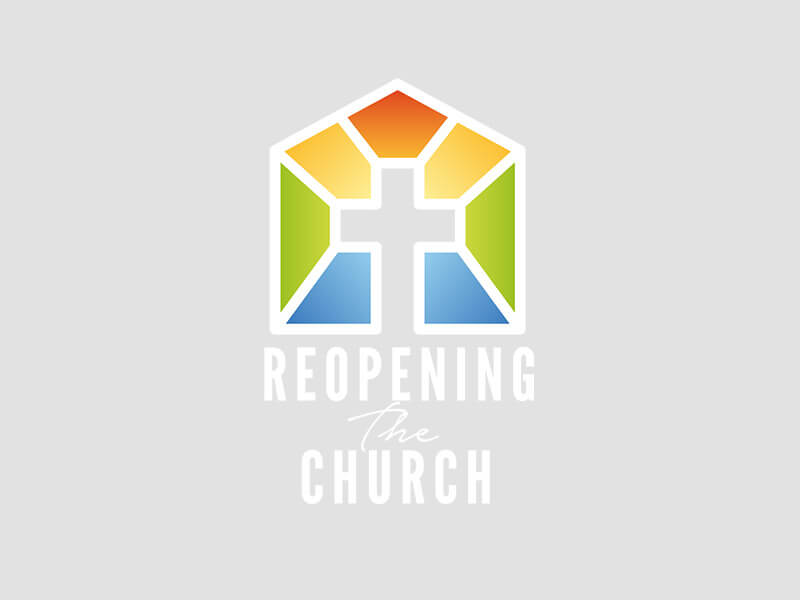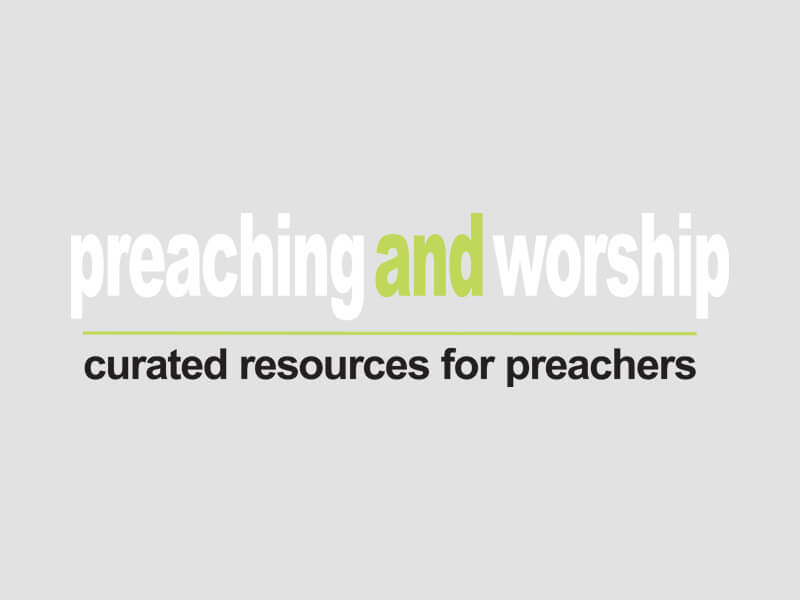COVID-19 Toolkit Videos
Part 1: Ministering to the Mental and Emotional Needs of the Congregation
Part 2: Who Pastors the Pastor?
Part 3: Church & Public School Partnership: Bridging the Gap During Social Distancing
Part 4: Ministry to Youth Through COVID
Part 5: Small Groups and COVID
Part 6: Meeting the Needs of the Community through COVID
Part 7: Comfort and Care through COVID
Recommended Resources

Presents recommendations and resources for churches and leaders to help plan a phased in reopening put together by the Humanitarian Disaster Institute and the National Association of Evangelicals. One helpful resource here is a downloadable “Guide to Reopening Church Services.”

Presents a website that collects resources (guides, blog posts, webinars, book suggestions for pastors and teams that are leading during this time of crisis to address their own mental health and resilience. This is maintained by The Billy Graham Center, the National Association of Evangelicals, and The National Christian Foundation.

Presents a collection of “Coronavirus Resources for the Church” developed by the Humanitarian Disaster Institute, a study center at Wheaton College to support churches as they navigate connecting with church members and ministering to their needs during this pandemic. It includes downloadable guides for dealing with trauma and grief, several online summits with leaders discussing how they are approaching church and nonprofit leadership in these uncertain times, as well as tip sheets and articles.

Presents a collection of resources (articles, podcasts, resource guides, etc.) for how to conduct worship during and beyond this pandemic. This includes recommendations and discussions around congregational worship, communion, preaching, etc. These were collected by the Calvin Institute of Christian Worship.

Presents a curated search query on the Preaching and Worship website, which collects 500+ resources across the web from churches and non-profit ministries on the dangers, possibilities/opportunities, and strategies that these ministries are employing to respond to the pandemic.

Presents a helpful article from a Christian physician who consulted with the WHO in their response to the SARS virus and has been helping churches in the Seattle/Pacific Northwest area put together plans for reopening. It gives a phase-in plan for different aspects of church ministry based upon local infection rates.

Presents a podcast sponsored by Barna research. The hosts discuss tools and current research to help navigate leading a church or nonprofit through crisis in general, but focused particularly in this season of how to lead through the pandemic.

Presents a beautiful meditation on the history of the church’s response to plagues (both good and bad responses) that is measured but hopeful.

Presents an article by Andy Crouch, Kurt Keilhacker, and Dave Blanchard. This is an article by the Christian thinktank, Praxis, that has been circulated and discussed quite a bit. It gives a framework for thinking about how the virus might change the way we lead our churches and Christian organizations if this ends up being a longer-term reality rather than a short-term crisis (a “winter of leadership” versus a “blizzard-like crisis).

Presents a follow-up article from the one above that goes beyond establishing a framework for “winter” leadership to offer some strategies for churches and leaderships to thrive by changing institutional practices and structures to adapt to the new realities of a global pandemic.
COVID-19 Toolkit: for Pastors Small Group Resources
The impact of COVID-19 has had a far reaching affect among Christian communities worldwide. As we engage in social distancing, conduct on-line worship services, and seek to keep our members connected in fellowship with one another it may feel like a herculean feat. During this season, on-line or virtual small groups is one method for providing members with an opportunity to exercise their faith by living out the “one anothers” of Scripture through love, care, encouragement and support within the context of a close relational community.
Establishing Small Groups
- Begin with What You Have. There are either leaders or members within the congregation that have already created informal groups. Meet with these leaders and members to provide them with the vision for the small groups ministry. Encourage them to serve as your initial small group leaders and continue to build the ministry from this initial group.
- Provide Various On-line Meeting Options. Do not restrict your group leaders to using a specific on-line meeting format. Instead, provide them with several options from which they may select the best fit for them and their members. Following are several options used by groups at Oak Cliff Bible Fellowship.
-
-
- Zoom. An easy to use video conference calling format that can host up to 100 participants per call. The only drawback is the free option is limited to 40 minutes. For more information click here.
- Skype. Has been around a long time, but requires each participant to have a Skype account and may be a little complicated to use. Limited to 25 participants per call. For more information click here.
- FreeConference Call. This is a great site, if there are group members that either do not have the technology to do video conference calling or want to keep it simple and connect by phone. A free account can be set up to host 1,000 participants on a call. For more information click here.
- Apple’s Facetime. Everyone in the group must have an Apple device (iphone, ipad, macbook, etc.) to use this option, but it can host up to 32 participants on a video call. Here is a how to article to get you started.
- Google Hangouts. This is Google’s version of Facetime and it can host up to 8 partcipants on a call. Each group member would need a gmail account and you can launch it from a Chrome browser. Here is a how to article to get you started.
-
- Develop a Group Structure. In order to have a sustainable and healthy small groups ministry, you must establish a solid structure or foundation on which the ministry can be built and grow. Following are several steps to consider in establishing the structure.
-
-
- Determine Your Goal. What is your reason for implementing small groups? Does your church want to focus on fellowship for connectivity, discipleship for growth, service for internal and external missions or evangelism for sharing the gospel? You may decide on either one or a combination of these. At Oak Cliff Bible Fellowship our group goal is a combination comprised of fellowship, discipleship and service.
- Determine Your Group Types. Select the group type which will allow you to meet your goals. Possibilities include short-term groups (6-8 weeks in length), long-term groups (1-2 years in length), sermon-based (primary study is the current sermon series), affinity (connect members around a shared value), or a combination of these group types. No one type is better, it really depends on your specific congregation and your ministry’s goal.
- Limit Group Size. Limit the size of your groups to 8-12 persons. This number is easily manageable by one leader and provides each group member with an opportunity to participate in the discussion.
- Senior Pastor Support. Whatever program the senior pastor emphasizes, the members will respond to. Therefore, ensure you have the senior pastor’s support and have him champion group membership through special church announcements.
- Incorporate Coaches for Support in Developing the Small Group Leaders. Under the Small Groups Director, incorporate a coaching structure (1 per 6-8 small group leaders). The coach will provide regular wellness checks on the spiritual and emotional health of the leaders and serve as the initial person for leaders to contact when they have questions or additional assistance is required. Some good resources for developing a coaching structure include:
- Incorporate a Training Program. Establish a training program to provide the small group leaders and coaches with the tools they will need to serve well. Here are some resources that provide initial training:
- Conduct Evaluations. An evaluation will provide you with feedback to determine if the small groups are meeting your established goals. Conduct the evaluation electronically at natural break points, such as the end of a short-term group campaign, end of a sermon-based series, etc. A program we use for evaluations is survey monkey. Click here for more information.
-
Resources to Guide You in Establishing a Small Groups Ministry
- Exponential Groups: Unleashing Your Church’s Potential by Allen White. This is an excellent resource for walking you step by step through the process of establishing a small groups ministry. The newly released workbook is a perfect companion to the book, as it is filled with examples and practical exercises that will assist you in maintaining a healthy small groups ministry. Click here for more information:
- Sticky Church by Larry Osborne. A good resource for guiding you through establishing a small groups ministry which will encourage your members to stick together. Click here for more information
- Planning Small Groups with Purpose by Steve Gladen: This book helps the small group ministry team of any church strategize a plan for developing a vision/purpose for your group ministry, launching groups, training and developing leaders. It is a companion guide to Steve Gladen’s classic small group resource, Small Groups with Purpose: How to Create Healthy Communities.
Study Resources
- Right Now Media. Referred to as the “Netflix for Bible Study” Right Now Media has resources that have been developed for every stage of life. Currently, they are offering free limited access for those whose church is not a subscriber. With a subscription, you are able to create your unique church library for group leaders to use. Click here to find out more.
- Sermon-Based Study. Prepare a discussion guide which accompanies the Sunday sermon. This does require coordination with the pastor, if you would like to have the discussion guide available immediately after the Sunday sermon. Otherwise, it can be created afterwards and emailed to the small group leaders for discussion within their group. You can find an example of a sermon based study guide here.
- Group Leader Selected Study. You may allow your group leaders to select a study. However, review the study first to ensure it aligns with your church’s statement of faith.
Equipping Small Group Leaders
- Re:Group Conference (July 13-26, 2020). This biennial conference is being offered for the first time on-line, providing resources for all levels of small group leaders from newly appointed to those who have served for many years. Click here for more information.
- Right Now Media Conference. This annual conference incorporates small groups equipping breakout sessions. Click here for more information.
- Making Small Groups Work: What Every Leader Needs to Know by Henry Cloud and John Townsend. Developed by two psychologists, this resource is designed to assist your small group leaders and members to grow spiritually, emotionally and relationally. The chapters are short and provide a roadmap for navigating common problems experienced when leading a small group. Click here for more information.
Small Groups Meeting in Person During Social Distancing
- If you have small groups at your church and members have expressed a desire to meet in person, you will need to provide them with guidelines based on your best medical and government knowledge that will help in mitigating the COVID-19 risk.
- Following are some guidelines for you to consider:
-
-
- Covenant. Update the group covenant or agreement document with the new social distancing guidelines and have each member review and agree to it at the first in-person meeting.
- Personal Protective Equipment (PPE). Recommend that group members wear a face mask and other PPE (e.g. face shields, gloves) which will make them feel comfortable during the in-person meeting.
- Greeting. Advise group members to avoid physical contact and to greet one another with a virtual hug or other sign of affection that can be displayed from a safe distance.
- Illness. Recommend that group members remain home and comply with medical guidelines if either they or someone in their household is experiencing COVID-19 symptoms.
- Location. Recommend meeting in a location where the group can safely practice social distancing such as outdoors in a backyard, park or parking lot.
- Food. Recommend groups not share food. If they are going to eat, have them provide their own food and drinks.
- Cleaning. If the meeting is held indoors, ensure commonly touched surfaces (restroom, door handles, chairs, etc.) are cleaned before and after the meeting. Also have hand sanitizer available for the members to use, as needed.
- High Risk Members. Encourage high risk members to remain at home and consider making the meeting a hybrid where they can attend virtually along with those meeting in-person. If the group is comprised primarily of high risk members, encourage them to remain home and continue meeting virtually.
- Children. It is very difficult to control social distancing with children during a group meeting; therefore, recommend conducting the meeting where children will not be present.
-
- Resources:

